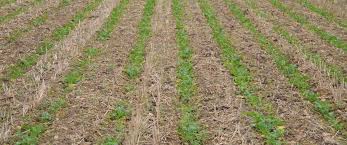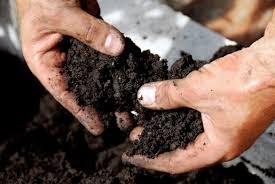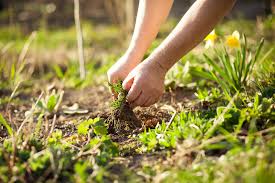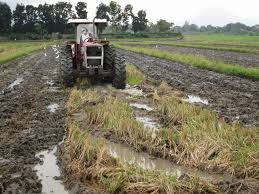Land preparation is a crucial step in the agricultural process. It lays the foundation for successful crop production by ensuring that the soil is in optimal condition for planting.
This article will cover the essential aspects of land preparation, including understanding tilling, the types of tillage practices, and key concepts of soil fertility.
Introduction to Land Preparation
Land preparation involves several practices that prepare the soil for planting crops. The main goals are to create a suitable environment for seed germination, promote root development, and control weeds and pests. Proper land preparation can significantly enhance crop yields and overall farm productivity.
1. Importance of Land Preparation: Well-prepared land helps in moisture retention, weed control, and nutrient availability, leading to healthier crops.
2. Timing: The timing of land preparation is crucial. It should be done in advance of the planting season to allow soil amendments to take effect.
3. Assessing Soil Conditions: Before beginning, farmers should assess soil conditions, including moisture levels, compaction, and fertility.
Understanding Tilling: Importance and Methods
Tilling is one of the primary methods of land preparation. It involves turning over and breaking up the soil to create a suitable seedbed.
1. Importance of Tilling: Tilling helps to aerate the soil, improve drainage, and mix in organic matter, which enhances soil fertility.
2. Methods of Tilling: There are various methods of tilling, each with specific purposes:
Conventional Tilling: Involves plowing the soil to a significant depth, which is effective for breaking up compacted soil and mixing in fertilizers but can lead to soil erosion.
Reduced Tillage: Involves less soil disturbance, which helps maintain soil structure and health while reducing erosion.
No-Till Farming: This method avoids tilling altogether, planting crops directly into the soil. It conserves moisture and improves soil health but requires specialized equipment.
Types of Tillage Practices

Different tillage practices are employed based on soil type, crop requirements, and environmental considerations.
1. Primary Tillage: This is the first step, involving deep turning of the soil using plows or chisel plows. It breaks up hard soil layers and prepares a seedbed.
2. Secondary Tillage: This follows primary tillage, further refining the seedbed using harrows or cultivators. It prepares a finer seedbed suitable for planting.
3. Conservation Tillage: Focuses on minimizing soil disturbance to preserve soil structure, moisture, and organic matter. This method often involves practices like cover cropping.
4. Strip Tillage: Involves tilling narrow strips of soil where crops will be planted while leaving the rest of the field undisturbed. This practice promotes moisture retention and reduces erosion.
5. Subsoiling: A deep tillage method that breaks up compacted soil layers without turning over the topsoil. It improves root penetration and water infiltration.
Soil Fertility: Key Concepts and Importance
Soil fertility is a critical factor in determining crop productivity. It refers to the soil’s ability to supply essential nutrients to plants.
1. Essential Nutrients: Key nutrients include nitrogen (N), phosphorus (P), and potassium (K), often referred to as NPK. These nutrients are vital for plant growth and development.
2. Soil Amendments: To improve soil fertility, farmers can use organic matter (like compost) and synthetic fertilizers. Organic matter enhances soil structure and microbial activity.
3. Soil pH: The pH level of soil affects nutrient availability. Most crops prefer a pH between 6.0 and 7.5. Regular soil testing helps determine pH and necessary amendments.
4. Nutrient Cycling: Understanding nutrient cycling is important for maintaining soil fertility. Practices like crop rotation and cover cropping can help replenish soil nutrients naturally.
5. Sustainable Practices: Sustainable soil fertility practices include minimizing chemical inputs, using organic fertilizers, and implementing soil conservation methods to enhance long-term soil health.
Read Also: Recommended Volume of Water for Fish Farming on a Concrete Pond
Techniques for Managing Soil Fertility

Managing soil fertility is essential for healthy crop production. Here are some key techniques:
1. Soil Testing: Regular soil testing helps determine nutrient levels and pH. It guides farmers in making informed decisions about soil amendments and fertilizers.
2. Organic Matter Addition: Adding organic matter, such as compost or well-rotted manure, improves soil structure, water retention, and nutrient availability. It also promotes beneficial microbial activity in the soil.
3. Crop Rotation: Rotating different crops each season helps maintain soil fertility. Different plants have varying nutrient requirements and can improve soil health when alternated.
4. Cover Cropping: Planting cover crops (like clover or rye) during the off-season prevents soil erosion, suppresses weeds, and enhances soil organic matter. When turned under, these crops add nutrients back into the soil.
5. Fertilizer Management: Applying fertilizers based on soil test results helps avoid over-fertilization, which can lead to nutrient runoff and environmental harm. Use slow-release or organic fertilizers to improve nutrient efficiency.
6. Minimizing Soil Disturbance: Reducing tillage or using no-till practices preserves soil structure, reduces erosion, and maintains soil organic matter, which is vital for soil fertility.
Understanding Weeds and Their Impact on Crops
Weeds are unwanted plants that compete with crops for resources such as nutrients, water, and sunlight. Understanding their impact is crucial for effective management:
1. Competition for Resources: Weeds can significantly reduce crop yields by competing for essential resources. They may absorb nutrients and moisture needed by crops, leading to poorer growth.
2. Pest and Disease Hosts: Some weeds can harbor pests and diseases that affect crops. They may serve as breeding grounds for insects and pathogens, increasing the risk of infestations and infections in crops.
3. Reduced Quality: Weeds can reduce the quality of harvested crops by introducing foreign seeds or contaminating produce. This can lead to lower market prices and dissatisfaction among consumers.
4. Increased Production Costs: Managing weeds requires labor, herbicides, and other resources, increasing production costs. Effective weed control can help mitigate these expenses.
Read Also: Concrete Pond Management: Steps to take before introducing the Fish in the Water
Effective Weed Control Methods

Implementing effective weed control methods is essential for maintaining healthy crops. Here are some common strategies:
1. Cultural Control: This involves using farming practices that reduce weed establishment. Techniques include crop rotation, cover cropping, and proper spacing between plants.
2. Mechanical Control: Physical methods such as hand weeding, hoeing, and mowing help remove weeds. Tilling can also bury weed seeds and disrupt their growth.
3. Mulching: Applying organic or synthetic mulch around crops suppresses weed growth by blocking sunlight. It also retains moisture and can improve soil quality as it decomposes.
4. Herbicides: Using herbicides can effectively control weeds, but it’s important to choose the right type and apply them correctly to minimize harm to crops and the environment. Integrated Pest Management (IPM) strategies can help combine chemical and non-chemical methods for effective weed management.
5. Biological Control: This method involves using natural predators or diseases to manage weed populations. For example, introducing specific insects that feed on certain weeds can help control their growth.
Integrating Tilling, Soil Fertility, and Weed Control
Integrating tilling practices with soil fertility management and weed control enhances overall agricultural efficiency. Here’s how they work together:
1. Tilling and Soil Fertility: Proper tilling techniques, such as reduced tillage or no-till, can enhance soil fertility by preserving organic matter and improving soil structure. This allows for better water retention and nutrient cycling.
2. Tilling and Weed Control: Tilling disrupts weed growth by burying seeds and roots. However, excessive tilling can lead to soil erosion and the emergence of more aggressive weed species. Balancing tillage practices is essential for effective weed management.
3. Soil Fertility and Weed Competition: Maintaining healthy soil fertility through organic matter addition and balanced fertilization helps crops outcompete weeds. Healthier crops can better utilize nutrients and water, reducing weed establishment.
4. Holistic Approach: A comprehensive approach to land management that includes tilling, soil fertility, and weed control leads to improved crop yields and sustainable agricultural practices. Farmers should continuously assess their methods and adapt to changing conditions to achieve the best results.
Land preparation is a fundamental step in successful agriculture. Understanding tilling and its methods, different tillage practices, and the key concepts of soil fertility is essential for farmers to create a productive growing environment.
Effective land management involves a combination of techniques for managing soil fertility, understanding the impact of weeds, and implementing effective weed control methods.
By integrating these practices with appropriate tilling methods, farmers can create a sustainable and productive agricultural system. This holistic approach not only enhances crop yields but also promotes soil health and environmental stewardship, ensuring a more sustainable future for agriculture.
Do you have any questions, suggestions, or contributions? If so, please feel free to use the comment box below to share your thoughts. We also encourage you to kindly share this information with others who might benefit from it. Since we can’t reach everyone at once, we truly appreciate your help in spreading the word. Thank you so much for your support and for sharing!
Read Also: Adaptive Means of Animals Coping with the Environment

